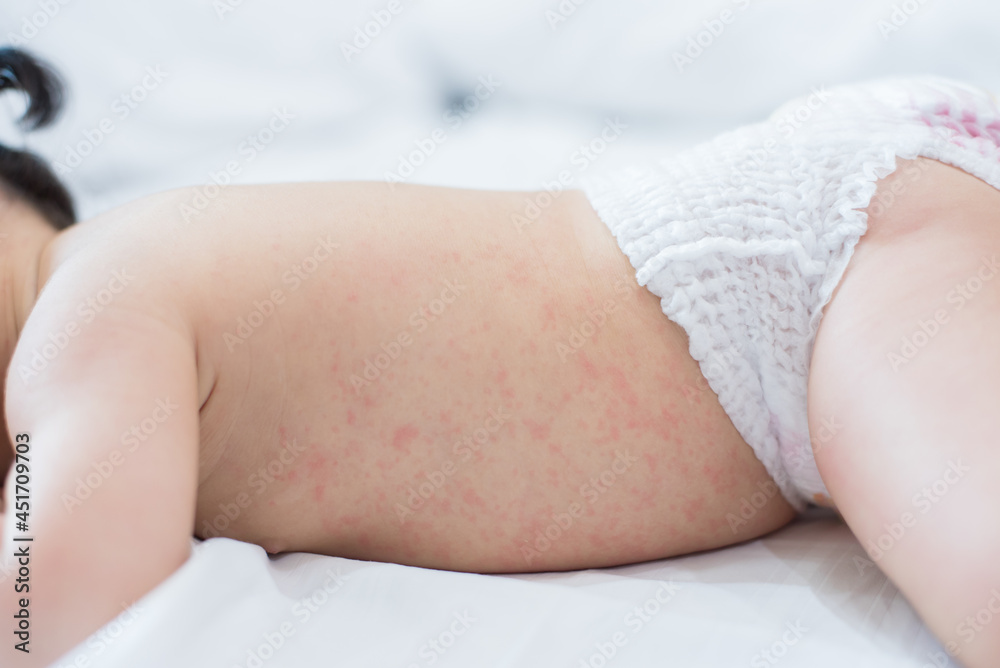Baby Heat Rash: Understanding, Treating, and Preventing Prickly Heat

When the weather gets warm, our little ones are especially vulnerable to heat rash, also known as prickly heat. While it’s not usually serious, it can be quite uncomfortable for your baby or toddler. Let’s dive into understanding baby heat rash, how to treat it, and ways to prevent it.
What Causes Heat Rash?
Heat rash occurs when sweat glands become blocked, leading to trapped sweat beneath the skin. Babies are particularly susceptible due to their smaller sweat glands and pores, which can easily clog.
Common Triggers of Heat Rash
Several factors can contribute to your baby developing a heat rash, including:
- Hot, Humid Weather: High temperatures and humidity make it difficult for sweat to evaporate, leading to clogged pores.
- Overdressing: Too many layers of clothing, even in cooler weather, can trap heat.
- Fever: Elevated body temperature can increase sweating and block sweat glands.
- Intense Physical Activity: Excessive movement and exercise can cause your child to sweat more.
Identifying Heat Rash
Recognizing heat rash is crucial for early treatment. Look for small, red or fluid-filled bumps on your child’s skin. These bumps often appear in clusters and can cause the surrounding skin to look red.
Common Areas Affected by Heat Rash
You’ll often find heat rash on:
- The back of the neck
- Shoulders and chest
- Areas where clothing is tight, such as the diaper area
- Scalp or forehead, especially under hats
- Skin folds like the neck, groin, armpits, and behind the knees
Types of Heat Rashes
Understanding the different types of heat rash can help in identifying and treating them effectively.
Also read: What Causes Milia In Newborns And How To Prevent It?
Miliaria Crystallina
This type of heat rash is the mildest and occurs when sweat ducts close to the surface of the skin are blocked. It presents as small, clear fluid-filled bumps that can break easily.
Miliaria Rubra
Also known as prickly heat, this is the most common type. It occurs deeper under the skin and is characterized by red bumps, inflammation, itching, and a prickly sensation, especially when sweating.
Miliaria Profunda
This rare type affects the deeper layers of the skin, resulting in larger, flesh-colored bumps. It can be very itchy and often appears on the trunk, arms, and legs when sweating.
Symptoms of Heat Rash in Babies and Toddlers
Heat rash symptoms include:
- Small red or clear fluid-filled bumps
- Red skin around the rash
- Itchiness or a prickly sensation
- Rash appearing in warm, moist areas like the neck, chest, armpits, and groin
Are Heat Rashes Serious?
Generally, heat rashes are not serious and clear up on their own. However, they indicate your child is too warm, which can lead to more serious conditions like heat exhaustion or heat stroke. It’s important to address the overheating promptly.
Treating Heat Rash in Babies and Toddlers
If your child develops a heat rash, try these steps:
- Immediate Cooling: Move your child to a cooler environment, out of direct heat.
- Cool Washcloths or Baths: Use cool washcloths or give a tepid bath to soothe the skin.
- Proper Skin Care: Allow the skin to air-dry or gently pat it dry.
- Loose Clothing: Dress your baby in lightweight, breathable fabrics like cotton.
- Over-the-Counter Treatments: For intense itching, consult your pediatrician about using a mild corticosteroid or calamine lotion.
Preventing Heat Rash
Preventing heat rash involves keeping your child cool and dry. Here are some tips:
- Dress Appropriately: Use loose-fitting, lightweight clothing. Layer lightly in colder weather.
- Regular Heat Checks: Frequently check your child’s temperature and skin condition.
- Choose Cool Locations: Stay in air-conditioned spaces or find shady, breezy outdoor spots.
- Hydration: Ensure your baby is well-hydrated with regular feedings and offer toddlers plenty of water.
- Keep Skin Dry: Pay attention to areas that stay moist and keep them clean and dry.
Practical Tips for Parents
To further protect your baby from heat rash, consider these additional tips:
- Avoid Baby Powder: It can cause respiratory issues and block pores.
- Safe Use of Fans and Air Conditioners: Ensure your child is comfortable without being directly in the airflow.
- Night Comfort: Use light bedding and ensure the room is cool enough for a comfortable sleep.
When to Seek Medical Advice
While heat rash typically resolves on its own, contact your healthcare provider if:
- The rash worsens
- Your child has a fever
- There are signs of infection like warmth, swelling, redness, or pus
- The rash persists for more than a few days
- The rash is extremely itchy or uncomfortable
Conclusion
Baby heat rash is common and usually not serious, but it can cause discomfort for your little one. By understanding how to identify, treat, and prevent heat rash, you can help keep your baby comfortable and healthy during warm weather. Remember to monitor your child’s condition and take steps to cool them down promptly if needed.
FAQs
What is the best treatment for baby heat rash? The best treatment includes cooling techniques like cool baths, loose clothing, and keeping the affected area dry. Over-the-counter anti-itch lotions can also help.
Can heat rash be prevented completely? While it’s difficult to prevent entirely, keeping your baby cool, dry, and dressed in breathable clothing can significantly reduce the risk.
Is heat rash a sign of a more serious condition? Heat rash itself is not serious but indicates overheating, which can lead to more severe conditions like heat stroke if not addressed.
How long does it take for heat rash to clear up? With proper care, heat rash typically clears up within a few days.
Are certain babies more prone to heat rash? Yes, babies with sensitive skin or those living in hot, humid climates are more prone to heat rash.
Read more: Cradle Cap (Infantile Seborrheic Dermatitis)






